Ultimate guide on how to hang a wall mirror on a plasterboard or masonry wall. Also, how to hang an irregular mirror? First consider, the type of wall you wish to hang your mirror upon, then, the correct fixings required to complete the job with ease. You can easily purchase your mirror wall fixings from Screwfix for trade-quality products or from Amazon for convenient home delivery.
Looking for a mirror? Shop here for Best Selling Mirrors at Soraya Interiors
How to hang a wall mirror?
Although we advise getting professional help, if you wish to do it yourself, this is what you should consider and the steps to follow to complete the job. If your are concerned about the size of your mirror, why not create a template out of paper and stick it to your wall!
CAUTION! Do not drill directly above sockets or light switches. Check for electric cables, water pipes, studs and other utilities before drilling.
Choose your wall fixings
Plasterboard walls: Spiral fixings and screws or GripIt fixings.
Solid masonry walls: Wall plugs and screws.
Your options are for a masonry or plasterboard wall and we also offer a pack for external mirrors with include stainless steel screws. Please select these at the time of ordering your mirror.
Step 1: Measure up
Measurement 1: On the back, measure from left to right, the distance from the hollow centre of the left hand mirror hook to the centre of the right hand hook.
Measurement 2: Measure the distance from the very top of the mirror down to the centre of the mirror hook. Measure each side, as the distance may be different.
Step 2: Mark the wall for your fixings
- A) Mark where you want the top and the middle of your mirror to be. This can be done by eye.
- B) Knowing where the middle and the top of your mirror will be, using measurement 2, which is the distance from the very top of the mirror down to the centre of the mirror hook, mark the wall. This is your half way point.
- C) From the above half way mark, divide measurement 1 in half. Recall, this is the distance from the hollow centre of the left hand mirror hook to the centre of the right hand hook. With this half measurement, measure out to the right and mark the wall. Then repeat the process for the left-hand fixing. You may want to now check that your right and left hand marks are level.
Step 3: For plasterboard walls
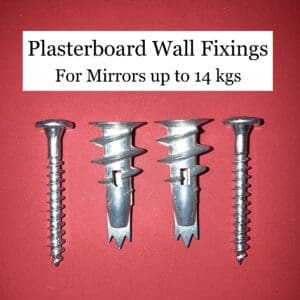
Two spiral fixings hold a combined weight up to 14 kgs.
First check for utilities. Create a small pilot hole using a drill bit or a bradel. Then, with a blunt wooden implement (like a kebab stick), check for any utilities that may be behind the plasterboard. If you can push the implement carefully through for approximately 2 inches then you will be fine.
- A) Position your spiral fixing on your mark or directly over your small hole. With a screwdriver, carefully screw the fixing until it is flat with the wall. Do not over tighten. A spiral fixing can not be unscrewed and tightened up again in the same hole.
- B) Screw the screw into the fixing. Allow the screw to protrude enough to safely hold the mirror hook. Repeat the process for the left-hand fixing.
For heavier mirrors being hung on a plasterboard wall: Two GripIt fixings hold a combined weight up to 74kgs.
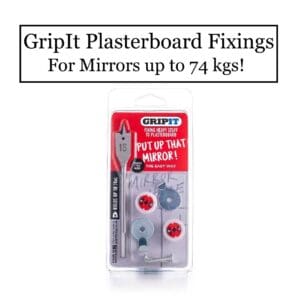
- A) Using a flat head drill bit, which is the same size as your GripIt fixings, drill a hole on your fixing mark.
- B) With your GripIt fixing, screw one into your hole. Make sure it is flat to your wall. As you install your fixing, you are rotating the metal wings to open and hold into position behind the plasterboard. Do not over tighten. A GripIt fixing can not be unscrewed and tightened up again in the same hole.
For a plasterboard wall with a stud: You will require a long screw. Screw this into the wooden stud until you have a firm hold but the screw protrudes out from the wall enough to hang the mirror off.
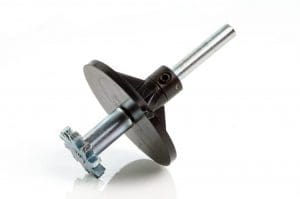
For a plasterboard wall with dot and dab and using Grip It Fixings: The dab of plaster makes the wall thicker. The under cutter tool sold with the Grip It Fixing pack will cut a recess into the thicker plaster to allow the wings on the Grip It to open. Then, Tap the Grip It fixings in place and turn until you feel the wings have fully opened. The screw should protrude out from the fixing just enough for the strap hangers to hang off.
 Step 3: For masonry walls
Step 3: For masonry walls
- A) Using a masonry drill with the right size drill bit, drill a straight hole into your wall.
- B) Hammer into the hole your plastic wall plug.
- C) Screw your masonry screw into your wall plug. Allow the screw to protrude enough to safely hold the mirror hook. Repeat the process for the left-hand fixing.
Step 4: Hang your mirror!
Expose mirror hooks. With assistance lift and hang your mirror from your new wall fixings. Congratulations! Job done. Soraya Interiors can not be held responsible for any damage you may cause to your property while you carry out this task. Now, How to keep your mirror clean!
How to hang an irregular mirror?
1.Lay the mirror upside down, take masking tape, run it alongside the back of the mirror covering both hang straps.
2.With a marker, transfer the holes of the hanging straps to the tape.
3.Take the tape and put it on the wall where you want to hang the mirror.
4.Level the tape (compensating for any angles) and mark the wall where you marked the tape. The holes will be exactly where you need them to be.
5.Use these marks to screw your wall fixings to the wall.
What is a plasterboard wall?
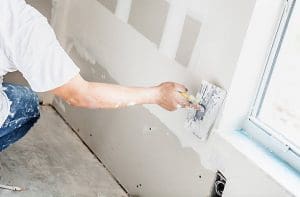
Plasterboard consists of two layers of lining paper holding a inner layer of plaster in place. When the plaster core is set in a drying chamber, it becomes rigid and strong enough for use as a building material. Mainly used as for internal partition walls and ceilings.
Most homes today feature internal plasterboard walls. Shelves, wall mirrors, art work and cabinets can be hung on a plasterboard wall. There are many fixings that can be used designed for a plasterboard wall. Plasterboard spiral fixings are great for holding a combined weight of approximately 14kg when using two fixings. For heavier items and mirrors, GripIt fixings provide an instant solution to what was once an enduring problem. Two GripIt fixings can hold a combined weight up to 74kgs, with no need for battens, wall modifications or compromises. These fixings save time, money and labour. The unique gripping wings allow GripIts to be installed in walls with extremely limited cavity space.
Plasterboard featuring stud work
Stud work is the supportive framework of a wall or partition. A stud wall usually comprises of a timber frame, secured to the floor, ceiling and walls. The stud frame is then covered with plasterboard. Studs form the internal part of the wall and generally feature a vertical structure.
Plasterboard featuring dot and dab
Dot and dab is where plasterboard is stuck to masonry wall with plasterboard adhesive. For a stud wall, dot and dab wall you will need our undercutting tool to use GripIt fixings. This creates a recess to allow the gripping wings of the fixing to open.
How to Hang a Mirror On a Plasterboard Wall?
What is a masonry wall?
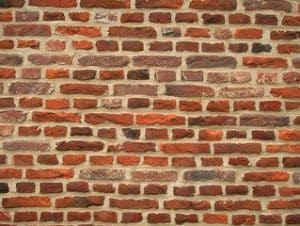
Masonry walls are the most durable part of any building or structure. A masonry wall is constructed stones, bricks, concrete blocks and tiles.
Although mainly exterior walls, bricks are often used as internal partition walls in older properties, refurbished barns and factories. Almost anything can be hung from a masonry wall but the right tools and fixings will be required.
How to hang a garden mirror?
Wall plugs are made specifically for solid masonry walls. They also come with a high impact load and knock in protection which prevents distortion on installation. The small wings stop rotation when the fixings are being screwed.
Using a masonry drill, drill a small hole into the wall. The hole you drill should be the same size as your wall plug. Then hammer gently the wall plug into the hole until flush with the wall. Finish by screwing the screws into the wall plugs, leaving enough space just to hold the strap hanger from the mirror.
We advise that you purchase a garden mirror which has been designed for outdoor use. Our garden mirrors here at Soraya Interiors have been frost protected with a powder. A garden mirror can be hung from a shed, fence or masonry wall.
To hang a mirror from the shed or fence, use long enough screws. If you feel that the fence or shed is to thin, we suggest you use a batten. This can used either on the outside or behind the wooden structure you are hanging off. To hang a garden wall mirror from a solid masonry wall, use stainless steel screws and wall plugs.
Purchasing mirror wall fixings
You can easily purchase your mirror wall fixings from Screwfix for trade-quality products or from Amazon for convenient home delivery.
To find out if garden mirrors are safe, please read our guide: Are garden mirrors a fire risk?
Thank you for visiting Soraya Interiors. If you haven’t already purchased your mirror, check out our Best Selling Mirrors!
Learn how to optimize space and light with a living room mirror. Read our latest guide: How to Use a Living Room Mirror to Enhance Space and Light?

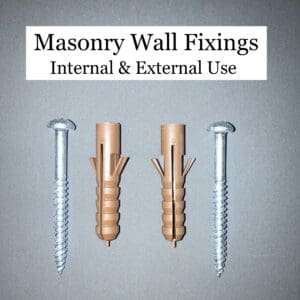 Step 3: For masonry walls
Step 3: For masonry walls